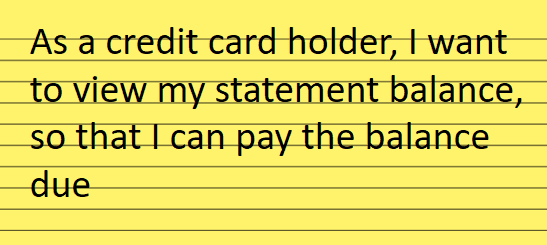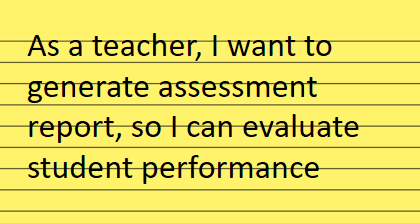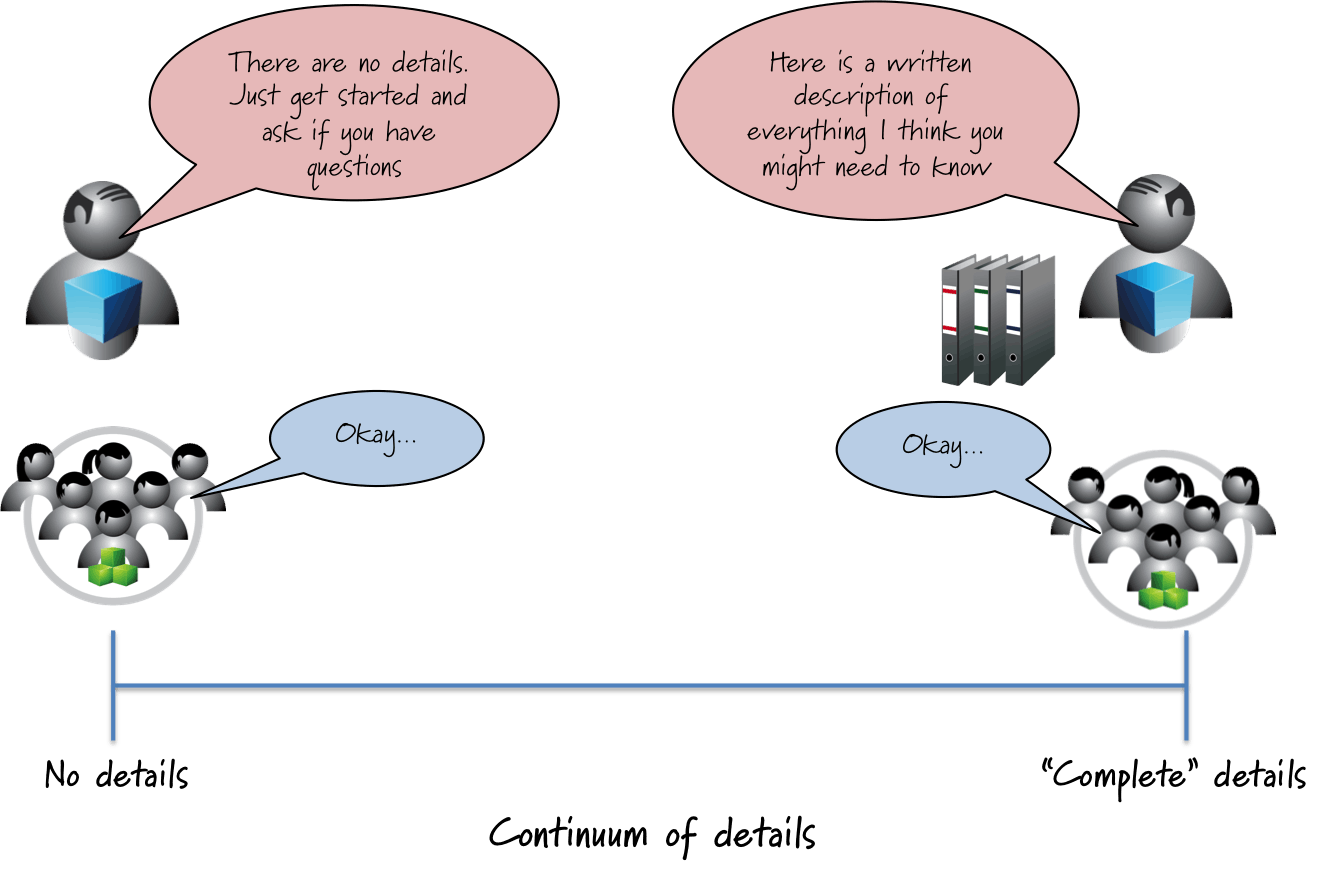Acceptance Criteria Definition
Acceptance Criteria defines how a particular feature could be used from an end user’s perspective. It focuses on business value, establishes the boundary of the feature’s scope and guides development. These are unique to a user story and form the basis of user story acceptance testing which establishes the conditions for the success of the feature.
Acceptance criteria could establish a boundary that helps team members to understand what’s included and what’s excluded from the scope of the user story. The criterion of user story acceptance not only informs the product behavior in happy path scenarios, it also guides the user experience when things don’t work as intended. It describes what would be verified by the acceptance tests.
When the product owner verifies particular user story acceptance criteria and the developed feature passes it, the development of the user story is considered a success. Pass / fail type results allow AC to form the basis of creating tests that can be automated and executed.
Tips for writing Acceptance Criteria
An essential aspect of writing good user story involves writing good acceptance criteria. It is the key to effectively testing the developed functionality. It allows the team members writing acceptance tests to understand the scope of the user story or Product Backlog Item (PBI).
How to define acceptance criteria? Here are some useful tips for writing AC for user stories. Some of the Scrum teams I’ve worked with preferred to use these ac tips as a checklist for writing good acceptance criteria. Acceptance criteria checklist helped with consistency and acted as training wheels for new team members. I encourage the teams to keep revisiting and revising these tips to fit their need. I would also forewarn to avoid using these tips as fixed rules.
7 Tips for Writing Acceptance Criteria:
- Each product backlog item or user story should have at least one acceptance criteria. Hey, don’t take writing acceptance criteria lightly or think of skipping it.
- Acceptance Criteria is written before implementation – this is obvious yet frequently missed by teams. Write acceptance criteria after the implementation and miss the benefits.
- Each acceptance criterion is independently testable. Why shouldn’t it be?
- Acceptance criteria must have a clear Pass / Fail result. Write complex and long sentences at your own risk.
- It focuses on the end result – What. Not the solution approach – How.
- Include functional as well as non-functional criteria – when relevant.
- Team members write acceptance criteria and the Product Owner verifies it. It confirms the PO and the team have shared understanding of the user story.
Acceptance Criteria examples
Example 1: User story and it’s acceptance criteria:
As a credit card holder, I want to view my statement (or account) balance, so that I can pay the balance due.
the acceptance criteria for this story could be:
- Display statement balance upon authentication. Say for example $1560
- Display total balance. For example $3560. Here the balance due from the current period is $2560 and past balance due is $2000.
- Show Minimum payment due. For example $140
- Show Payment due date. For example May 16th of the current month
- Show error message if service not responding or timeout. For example ‘Sorry, something went wrong with the service. Please try again.’
Example 2: User story and it’s acceptance criteria:
As a teacher, I want to generate assessment report, so I can evaluate student performance.
the acceptance criteria for this story could be:
- Show a student’s current assessment score.
- Display past assessment score of the student.
- Provide an option to Print / Save / Share. (By the way, this could be split as a separate user story by itself).
- Display error message if service not responding. (If a team chooses to add the Error Message as their definition of done for all stories – where ever applicable, it could be omitted from the acceptance criteria).
Challenges with writing Effective Acceptance Criteria
Despite being simple to write, yet powerful, the task of writing acceptance criteria looks challenging for most teams. It’s not uncommon for teams to make simple mistakes and repeat errors when writing Acceptance Criteria. Some of the most common challenges and mistakes I’ve noticed with acceptance criteria from user stories I’ve seen in the real world are:
Pretty Narrow: Acceptance criteria is written very specific to a particular use case, scenario or technical approach.
Keep in mind, when you already have a solution in mind while writing the acceptance criteria, you end up leading your developers in that particular direction. In most cases, that may not be the optimum / best way of solving the challenge. Also being too narrow may mean that your testing may skip other user behaviors not specified in the AC. This increases the chances of missed testing, increases the risk of failure.
Very Broad: Acceptance criteria is written pretty broad.
Too broad acceptance criteria usually increase the risk of the user story being too bulky and may introduce fat in the features. Good acceptance criteria as discussed above should establish boundary so that the developers know how much to code and where to stop.
Complex: Acceptance criteria is complex, includes jargons and technical details.
Good acceptance criteria should be written in simple English and should be easy to understand. The key is to keep it simple.
What are the challenges you find with writing acceptance criteria?
Let me know in comments and I’ll address your most common challenges.
Who writes Acceptance Criteria?
Let me first burst a common myth that the Product Owner should write the acceptance criteria.
In fact, I recommend, you try ‘avoiding’ the Product Owner writes all the acceptance criteria. Why so?
Who writes the acceptance criteria, or who defines the acceptance criteria is not a matter of rules, availability or convenience.
What matters is – writing acceptance criteria (AC) should help establish and communicate shared understanding between the product owner and the development team about solving a customer’s challenge or building the product capability.
When you encourage the team members to write the AC, they must first understand the intended purpose of the feature and the outcome it must generate for the users.
Writing the acceptance criteria clarifies the scope for the team and also allows for the Product Owner to verify if the team and the PO have a shared understanding of the feature.
Alternately, Acceptance criteria may also be developed jointly by the development team and the product owner.
What is the right amount of Acceptance Criteria?
Well, if you’ve too many AC for a single product backlog item (PBI), chances are you could split it into multiple PBIs.
Tip: Have too many criteria as part of one story and chances are you’ll easily run into at least one criteria that isn’t passing.
That delays the delivery of that user story, which delays the feedback, ultimately increasing the risk of failure. I recommend, whenever you can, please go ahead and split the user story right there. Thank me later 🙂
Splitting user stories helps in keeping each user story small, improves chances of delivering it early, seeking feedback faster, hence reduces risk. Yes, there is effort involved in splitting the user stories as well.
Hence, the PO and the development team have to identify for each user story, what is a barely sufficient detail of AC. Photo source: Kenny Rubin, Innolution where Ken discusses the pros and cons of adding too many details versus no detail and establishes the need to identify what is barely sufficient detail to get started.
It’s important that your team members spend a little time and get good at writing acceptance criteria. It’s benefits are long lasting and ROI of the effort is simply too high to ignore.
Rule of Thumb: My rule of thumb for number of acceptance criteria is to have between 1-3 per user story. If a user story have between 4-5 of these, I start exploring options to split the story. If there are 6 or more criterion then the chances are the team won’t be able to implement it all in one sprint, definitely this story needs to be split in more than one.
Remember small user stories with lesser scope can be delivered comfortable within a sprint and presented to users for feedback. Early feedback reduces risk and impact of failure.
When to write Acceptance Criteria?
Acceptance criteria (AC) should be written anytime before the user story is deemed ready to enter the Sprint Planning. Usually it is written during the product backlog refinement meeting. AC can be progressively developed and added to a user story during the refinement. However it should not be kept for when the development team start implementing a user story.
“If we write and review the acceptance critera before implementation begins, we’re more likely to capture the customer intent rather than the development reality” writes Steve Povilaitis.
To ensure the AC is defined for each user story upfront, many teams add writing acceptance criteria for User Stories to their User Story Readiness Checklist. User Stories that do not have at least one AC can’t enter the Sprint Planning itself. Well, that shouldn’t prevent the team from exploring the intent or refining the AC after the Sprint Planning / before the implementation when the team members have conversations with the Product Owner.
What you should do now
1. If you’d like us to work with your teams — to dramatically improve your product management, product development, organizational agility, and growth (like we did for many clients from fortune 500s to young startups), then leave your inquiry and claim a free Agile Coaching strategy session. On this free phone consultation, one of our expert coaches will discuss your agility goals and suggest strategies to improve your team and organizational agility.
2. If you’d like to assess your team agility for free, go to our Agile Assessment, where you can instantly evaluate the current agility of your team and identify the gap between their current state and desired state. Or, if you’d like us to build your company’s in-house capabilities to be Agile (not for free), then contact us and we’ll discuss your requirements.
3. If you’d like to read further — see our recent insightful Scrum articles
4. If you enjoyed this article, so will your friends. Why not share it on LinkedIn, Twitter, Facebook and Email










Subscribe To Our Newsletter
Join our mailing list to receive the latest news and updates from our team.
Awesome. You've successfully subscribed.